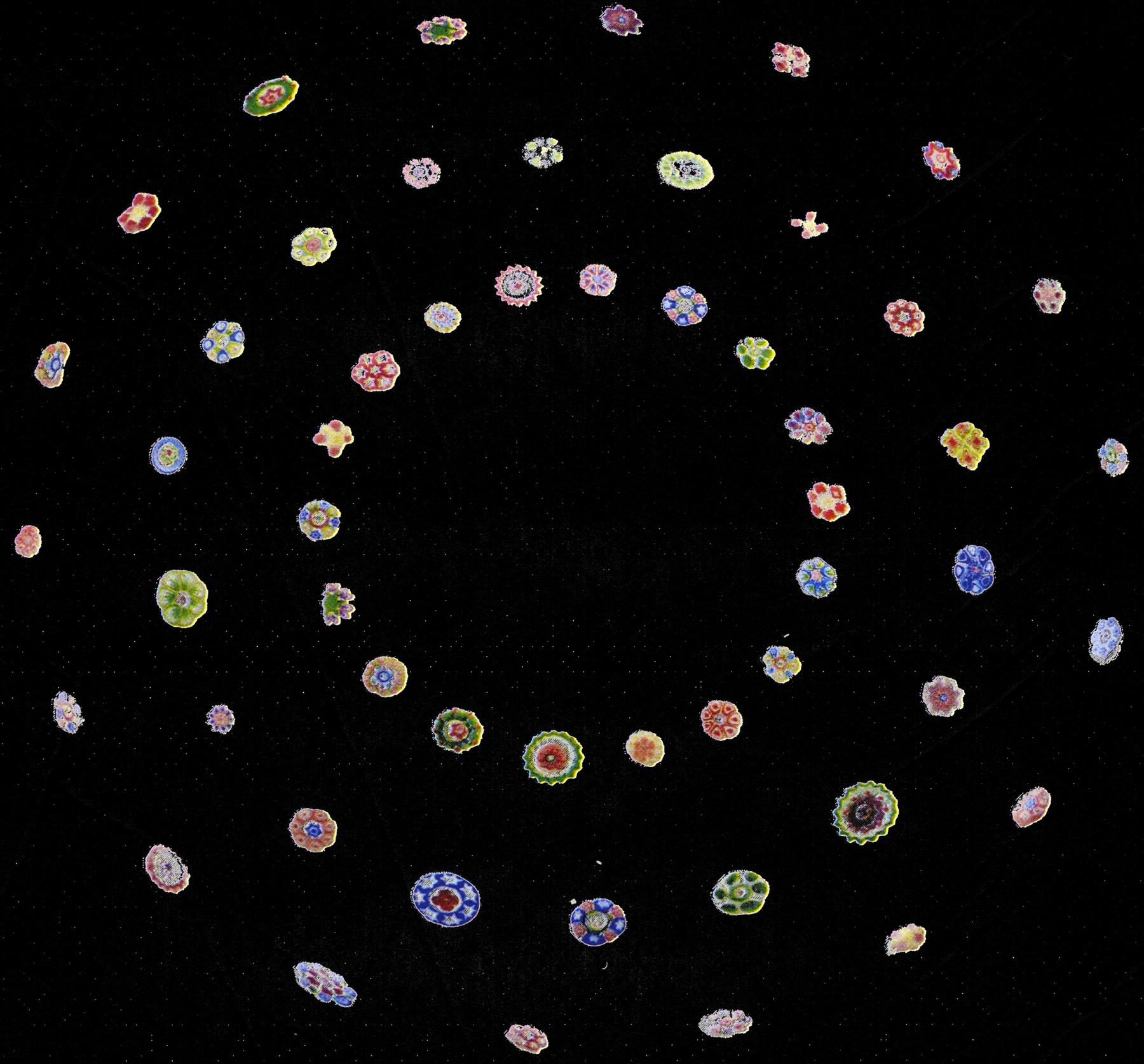Artists and Class-Struggle
Enzo Mari • 1971
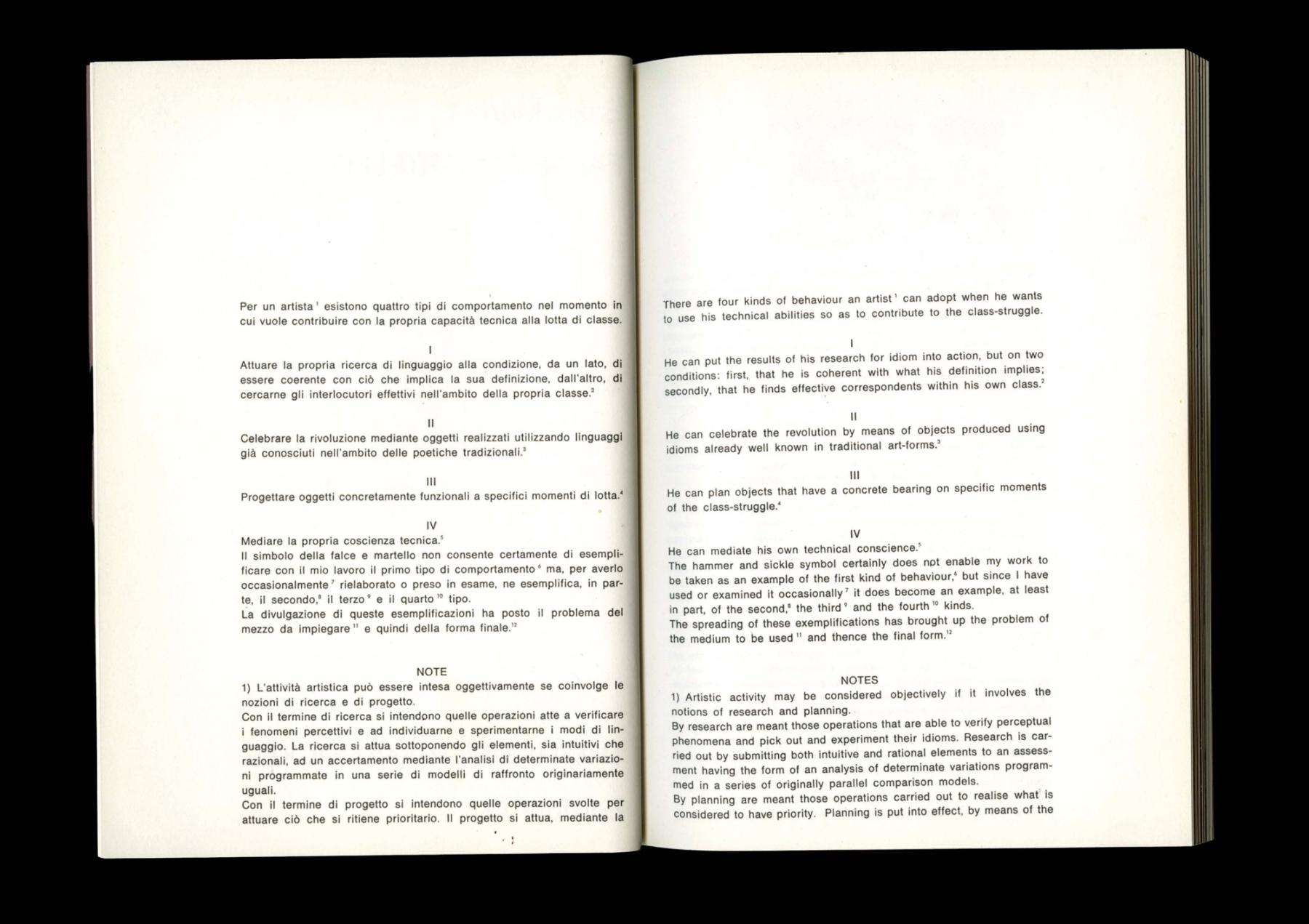
AEnzo Mari, Falce e martello, 1973. (abridged)

AEnzo Mari, Falce e martello, 1973. (abridged)
CThe problem is not to make political films but to make films politically.
EOne publishes to find comrades!
G“We must search for popular culture amongst the living and not the dead.” If not, we risk formulating a “retro-concept” of popular patrimony.
— Michel de Certeau quoted in Communication & Class Struggle, Vol 1, by Armand Mattelart And Seth Siegelaub.
ISince the artists who make a proletarian choice recognize that they are a privileged instance in the minute subdivision of labour which the ruling class uses to maintain its power, their only objective can be the transition from an art understood as an aristocratic moment to an art understood as a democratic moment (and here one must avoid confusing "democratic" art, which everyone may have the opportunity and right to practice, with "demagogic" art, dedicated to the glorification of the proletariat, but privilege of the few).
Such an objective may be approached in three very precise ways: → a) by operating politically inside one's own class so as to bring out its contradictions and mediate them as an effective contribution to the class-struggle; → b) by operating with one's own research and planning work so as to objectivize the so-called creative processes and thus to do away with the myth of the collective image — so functional to the ruling class — of the exceptionality of the individual. → c) by recognizing and singling out every moment in which the proletariat spontaneously constructs and uses its own idiom without being fully conscious of it since it is still conditioned by the myths of aristocratic culture. — EM
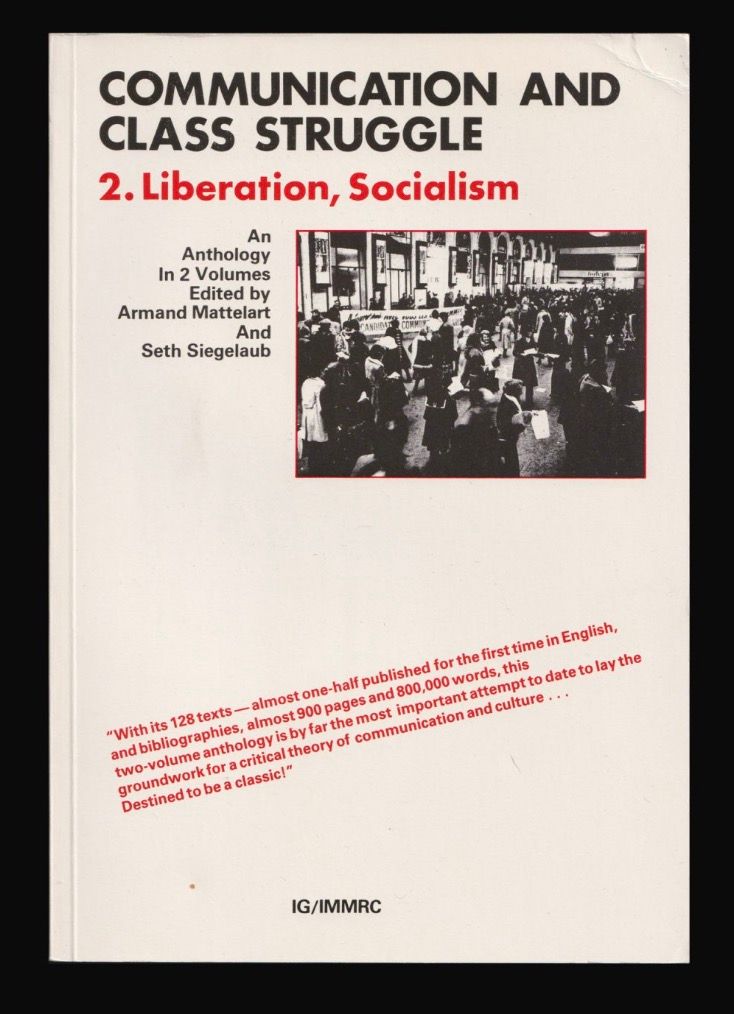
KCOMMUNICATION AND CLASS STRUGGLE: 2. Liberation, Socialism
Edited by Armand Mattelart and Seth Siegelaub, 1983
A There are four kinds of behavior an artist B can adopt when one wants to use one's technical abilities so as to contribute to the class-struggle.
I One can put the results of one’s artist research into practice, but on two conditions: first, that one remain coherent with what one’s research implies C D; secondly, that one find effective correspondents within one’s own class. E
II One can celebrate the revolution by means of objects produced using idioms already well known in traditional art-forms. F G
III One can make objects that have a concrete bearing on specific moments of the class-struggle. H
IV One can mediate one's own technical and social conscience. I J K
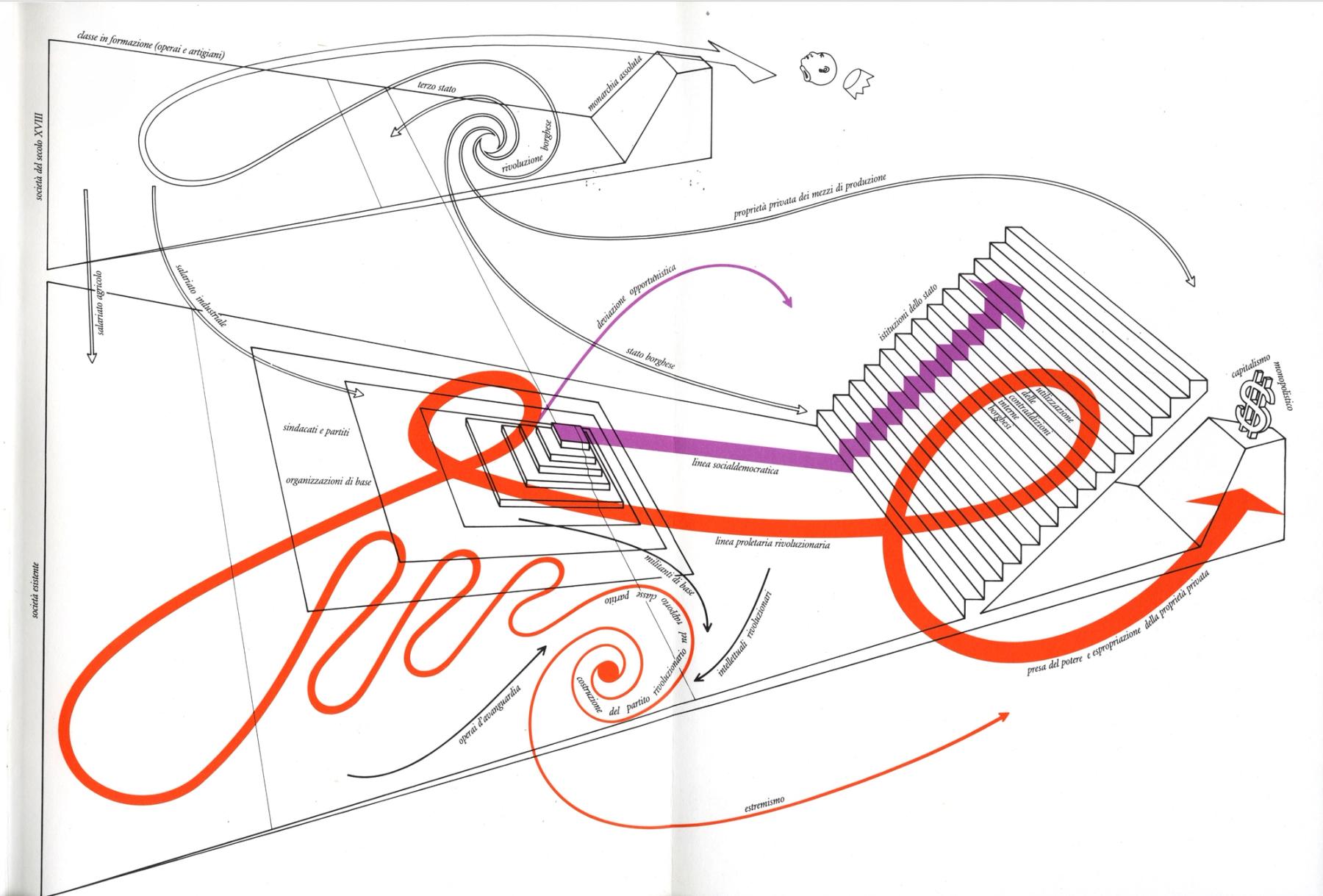
LPolitical Map, Enzo Mari & Francesco Leonetti, "Atlante Secondo Lenin", 1974 (big)
“Here, two main historical directions of political struggle are given: social-democratic or revisionist; and revolutionary. It is well known that the first of these aims, as concrete and realistic, and therefore sufficient, at the traditional democratic possibility of access to power, both parliamentary and governmental, and at reforms, for the broadening of participation and for a balance in class conflicts, with the development of social services.
For the proletarian revolutionary line and its strategy-tactics, as demonstrated by historical positions and events, the class-party relationship is the active center. The proletarian political party is built by continually traversing the class and mass base, in a dynamic relationship useful to its autonomous organizations of immediate defense and struggle; it is made up of revolutionary workers and intellectuals, constituting a vanguard as a division of the class, and it realizes the alliance with the peasant and petty-bourgeois strata; Within the struggle, in its objective of establishing a relationship between practical economic struggle and the level of proletarian political struggle, it also uses parliament and democratic institutions as platforms for denunciation and propaganda. And, in appropriate objective conditions—whether of crisis or war with the development of insurrectionary social struggle—it aims to seize political power through the expropriation of private ownership of the means of production. It thus seeks to initiate, and maintain with a popular army, a transitional phase, that of the dictatorship of the proletariat over the bourgeois class, for the general transformation toward a classless society.
It is also shown here that from the bourgeois revolution came forms of representation as a replacement for political power through elections, and with it a new type of power, that of capitalism as a system, which is an authority not explicitly presented yet conditioning every aspect of collective life.”
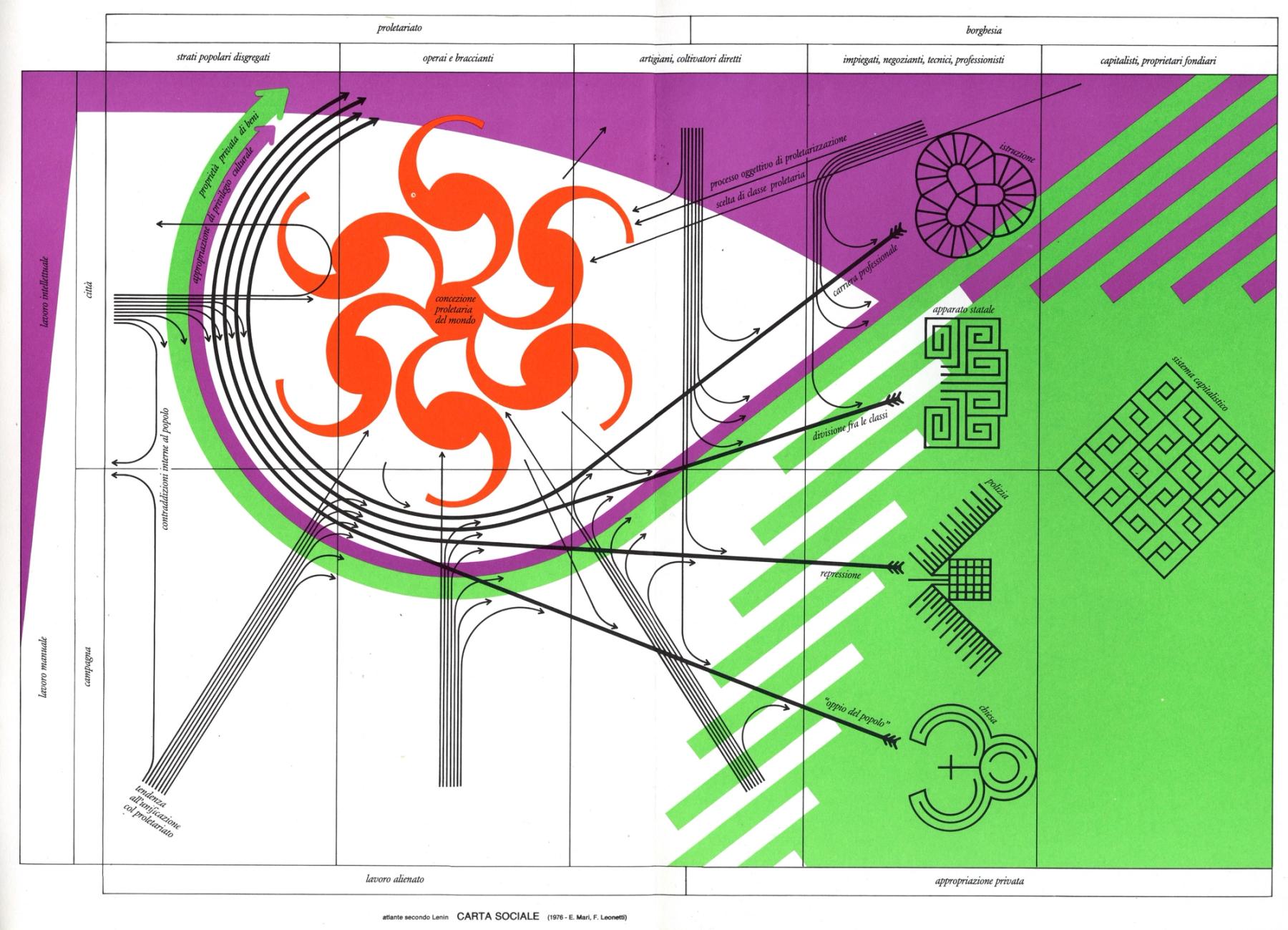
MSocial Map, Enzo Mari & Francesco Leonetti, "Atlante Secondo Lenin", 1974
“On classes and worldviews, the data of this chart are: horizontally, the social classes as commonly understood; vertically, the division between manual and intellectual labor; on the right, the indication of private property. Within these is situated the fundamental contradiction between bourgeoisie and proletariat, between the bourgeois worldview and the proletarian worldview; these in turn exert an influence on the other social strata.”
BArtistic activity may be considered objectively if it involves the notions of research and planning.
By research is meant those operations that are able to verify perceptual phenomena and pick out and experiment with their forms. Research is carried out by submitting both intuitive and rational elements to an assessment having the form of an analysis of determinate variations programmed in a series of originally parallel comparison models.
By planning is meant those operations carried out to realize what is considered to have priority. Planning is put into effect, by means of the co-ordination of appropriate techniques, by progressively singling out what has priority within the framework of everything that influences the determination of a process.
Periods of research and planning are always correlated: the former demands constant planning, the latter constant verification. In any case, theory is always preceded by experience and such activities can only be acquired by effective practical work. Thus they participate in the process of historical becoming, thus they cannot avoid tackling new problems and can only put the culture currently in force into a state of crisis. — EM
DThe true and the made are convertible into each other. (verum et factum convertuntur)
FGuttuso, for example, rather than work out an idiom that is coherent with our own period of history, reiterates idiom forms belonging to the last two centuries, even if he does this with great skill. The function of an opera singer is more coherent, for he does not reiterate, but reinterprets the idioms of a musical culture that has now disappeared and that we could not otherwise experience (whereas the paintings of Tintoretto, Delacroix and Van Gogh are still in existence). — EM
HExamples of this are posters, film documentaries, tokens and so on. But these kinds of typology, which should, by virtue of their concrete, immediate terms of reference, be those whose quality is, on average, more efficacious, actually show a dire lack of basic ideology. In fact, while the ruling class is using interdisciplinary-type (that is, collective) means to produce its information, the proletarian artist is still producing at an individual level, trusting in the myth of his own ability to express himself. If it is true that the difference depends on whether one does or does not have the means of production at one's disposal, it is equally true that for this same reason, artists and other technicians should carefully co-ordinate their assets and not squander them in never-ending individual efforts. — EM
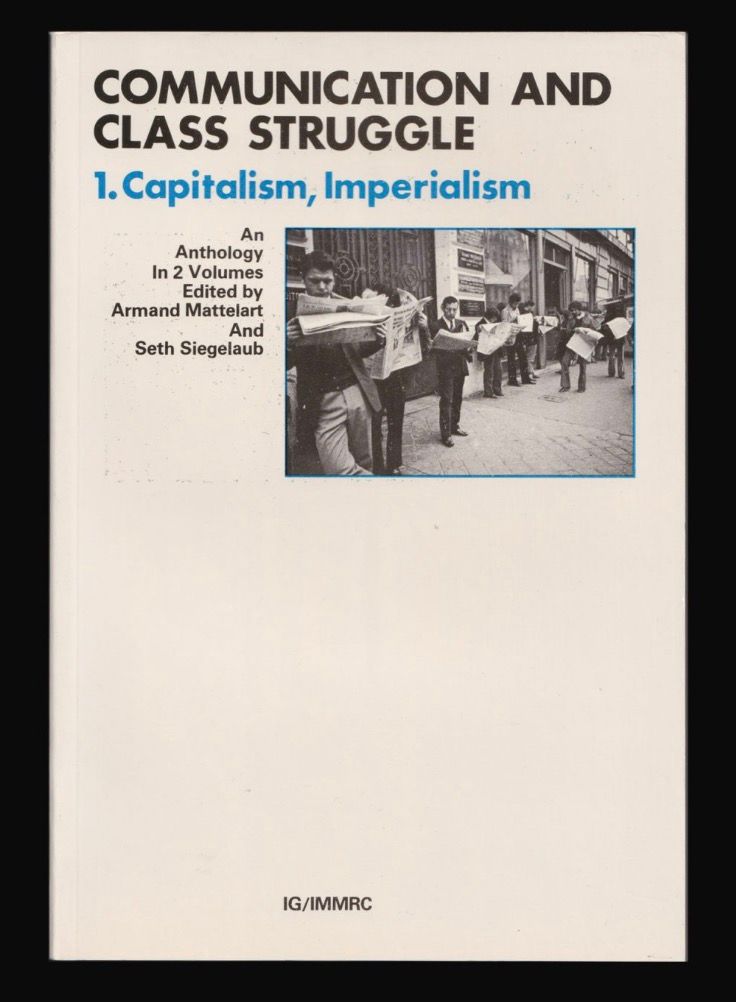
JCOMMUNICATION AND CLASS STRUGGLE: 1. Capitalism, Imperialism
Edited by Armand Mattelart and Seth Siegelaub, 1979
